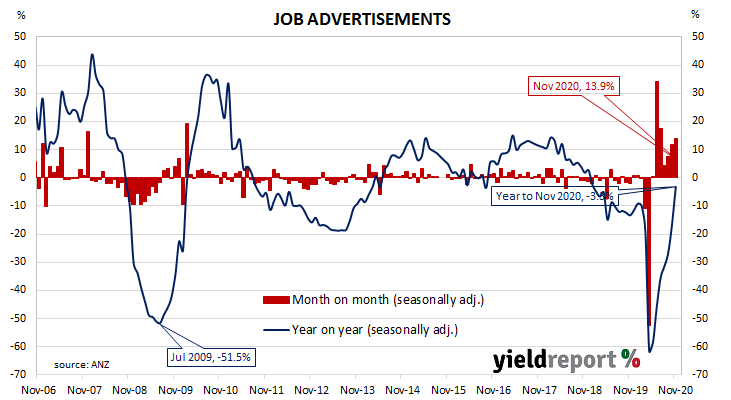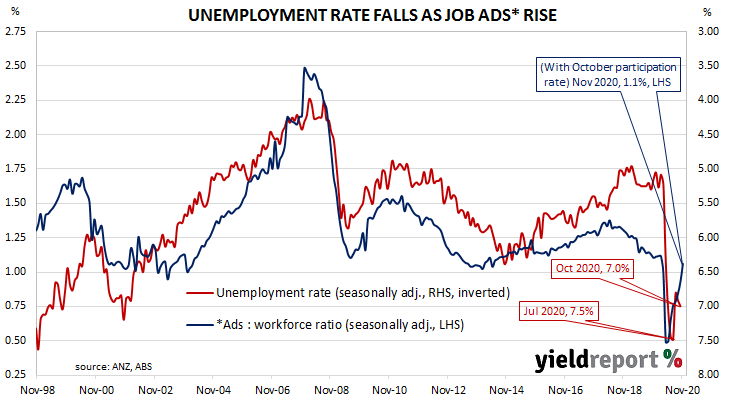Summary: Job ads increase significantly in November; just 3.3% lower than in November 2019; Victorian reopening sparks acceleration; jobs rebound “could continue into early-2021 at least”.
From mid-2017 onwards, year-on-year growth rates in the total number of Australian job advertisements consistently exceeded 10%. That was until mid-2018 when the annual growth rate fell back markedly. 2019 was notable for its reduced employment advertising and this trend continued into the first quarter of 2020. Figures plunged in April as pandemic restrictions took effect but subsequent reports have provided evidence a recovery is taking place.
According to the latest ANZ figures, total advertisements increased by 13.9% in November on a seasonally-adjusted basis. The rise followed an 11.9% increase in October and a 7.5% gain in September after revisions. However, on a 12-month basis, total job advertisements were still 3.3% lower than in November 2019, although this figure was a considerable improvement from October’s comparable figure of -16.7%.

“Victoria’s reopening has sparked an acceleration in the Job Ads recovery through October and November, with ANZ Job Ads up 27% over the two-month period,” said ANZ senior economist Catherine Birch.
Long-term Commonwealth bond yields moved higher, following higher US Treasury yields at the close of trading on Friday night (US time). By the end of the day, the 10-year ACGB yield had gained 5bps to 1.04% and the 20-year yield had gained 4bps to 1.69%. The 3-year yield finished unchanged at 0.19%.
At the current rate, Birch expects total advertisements “to match or even exceed pre-COVID levels by year-end.” She said “the rebound in national employment could continue into early-2021 at least, although the lagged recovery in full-time employment remains a concern.”
The inverse relationship between job advertisements and the unemployment rate has been quite strong (see below chart), although ANZ themselves called the relationship between the two series into question in early 2019. A rising number of job advertisements as a proportion of the labour force is suggestive of lower unemployment rates in the near-future. A falling ratio suggests higher unemployment rates will follow.

In 2008/2009, advertisements plummeted and Australia’s unemployment rate jumped from 4% to nearly 6% over a period of 15 months. When a more dramatic fall in advertisements took place in April, the unemployment rate responded much more quickly.

